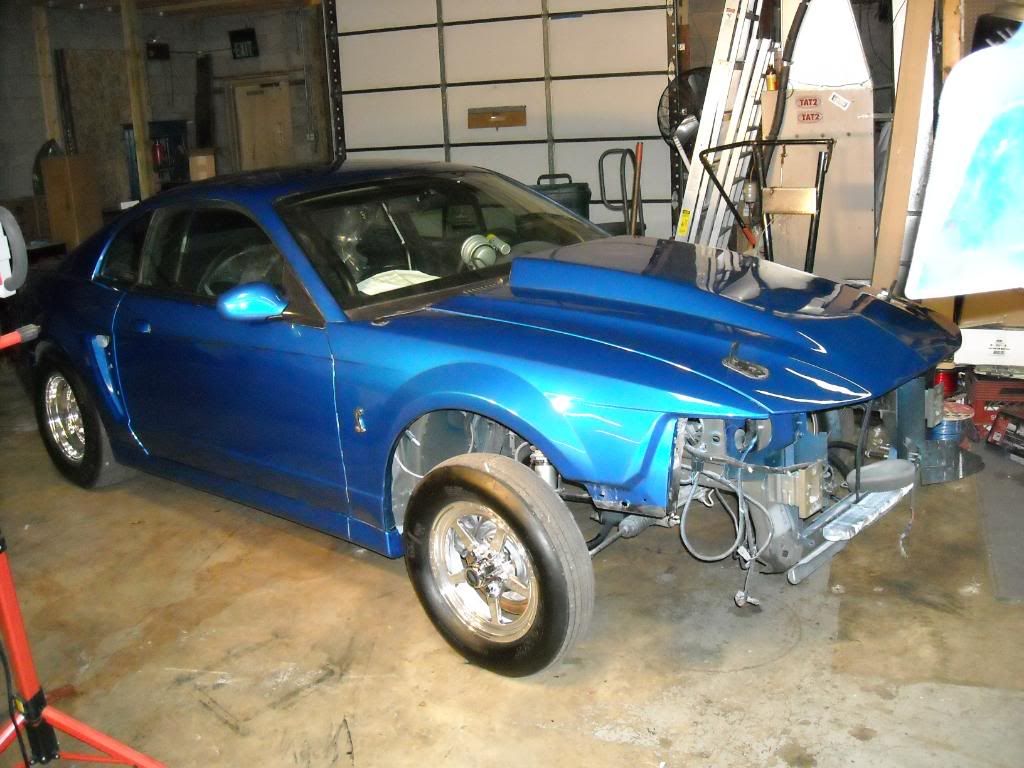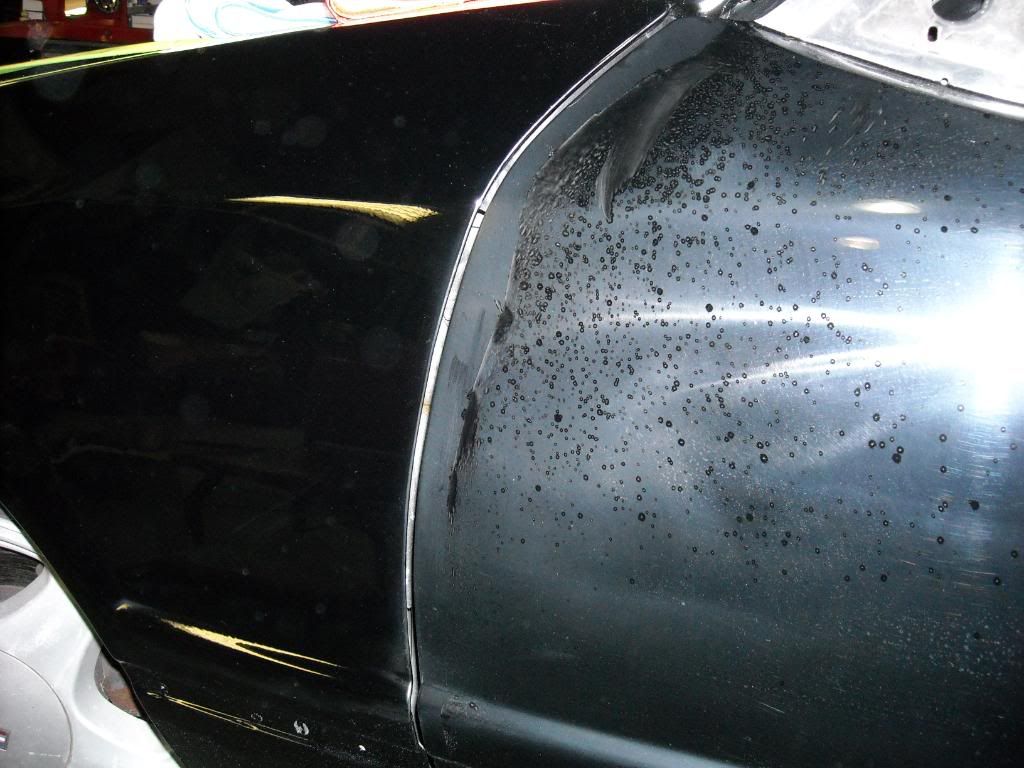Navigation
Install the app
How to install the app on iOS
Follow along with the video below to see how to install our site as a web app on your home screen.
Note: This feature may not be available in some browsers.
More options
Style variation
You are using an out of date browser. It may not display this or other websites correctly.
You should upgrade or use an alternative browser.
You should upgrade or use an alternative browser.
wet sanding
- Thread starter jamores23
- Start date
67Customs
New member
- Jan 29, 2007
- 581
- 0
There is just to much to really answer in a single post for those questions.
The simple of it is...
You need to wetsand if you have a belemish that needs more bit than a wool pad and cutting compound or if you want to finess a scratch out rather than cut the fool out of it.
You can sometimes remove less clear and remove the imperfection by taking some time to properly wetsand a scratch out and then remove the sanding scratches than if you just hit it with a wool pad an a cutting compound.
Basically, you can tell if you need to wetsand if you use a wool pad and a compound for a couple of passes and it doesn't touch the belmish.
A wool pad, some kind of compound and then follow with a foam pad and polish to clear it all up. You don't want to sand with the rotary. Do that by hand with a block. It all depends on the clear for what compound you need to use. I can't really recommend one for all. I use a bunch of defferent ones depending on the vehicle I am working on.
There is A LOT more to it than that, but there is a short answer to get you started.
The simple of it is...
You need to wetsand if you have a belemish that needs more bit than a wool pad and cutting compound or if you want to finess a scratch out rather than cut the fool out of it.
You can sometimes remove less clear and remove the imperfection by taking some time to properly wetsand a scratch out and then remove the sanding scratches than if you just hit it with a wool pad an a cutting compound.
Basically, you can tell if you need to wetsand if you use a wool pad and a compound for a couple of passes and it doesn't touch the belmish.
A wool pad, some kind of compound and then follow with a foam pad and polish to clear it all up. You don't want to sand with the rotary. Do that by hand with a block. It all depends on the clear for what compound you need to use. I can't really recommend one for all. I use a bunch of defferent ones depending on the vehicle I am working on.
There is A LOT more to it than that, but there is a short answer to get you started.
DetailnDude
New member
- Jan 27, 2009
- 45
- 0
You also need to know what kind of paint you are wet sanding . Is it base coat clear coat,Enamel, or laquer. Enamel does not have clear if it's painted properly and it will shine up as good if not better than a clear coat. base coat clear coat you have to be sure you do not sand through the clear coat the the base will not shine and you will end up with a dull spot. Laquer should be clear coated and basically works as the same principal as base coat clear coat. If you are wetsanding Candy paint (transperant color paint) be sure not to oversand you don't want to pay for a paint job on candy. A buddy of mine has done some with ghost patterns priced between $10-20,000 per car. You shouldn't ever have to use anything rougher than a 2000-2500 grit paper. If it's something you can't fix with that grit you might have a bigger problem... Good Luck and be careful !!!
memphisraines26
New member
- Feb 3, 2009
- 42
- 0
this is something i've wondered about myself. so 2000-2500 is the most to be used. should it be a side to side or circular motion when wet sanding? so if a heavy compound with wool pad doesnt work, wetsand?
ASPHALT ROCKET
SELF BANNED
- Mar 4, 2006
- 2,872
- 0
You will use more than just 2000-2500, and just use a back and forth motion.
memphisraines26
New member
- Feb 3, 2009
- 42
- 0
i will have to go finer than 2500 grit? thanks for the good info
DetailnDude
New member
- Jan 27, 2009
- 45
- 0
once you have a little bit of experience with wetsanding it will all make sence to you. the reason for 2000-2500 is that it is very fine and you really have to hit the same spot quite a bit to cause serious damage. I use a circular motion and I do not use a block I have cut the paper to fit a block but I hold it below my 2 middle fingers and use my pinky and index finger to stablize it. if that makes sence. Now when it comes to basic or even advanced detailing wetsanding is next to never neccesary. The only time I have found myself wetsanding is on new custom paintjobs to remove minor or major orange which was the case with the 57 Chevy in my sig. as for street cars I honestly can't remember ever really wetsanding anything. as for what to use when wetsanding if you have a favorite liquid car wash soap without wax just mix a small amout of that with water to create lubrication for the sandpaper to slide around freely on the paint. Please get some other opinions and as was posted earlier there are so many variables involved in how ,when , and why to wetsand. So it's hard to say without having the actual car sitting in front of me.. what I would recommend is to go to your local junk yard and grab an old hood and play around with sandpaper,compound,polishers,pads and get a feel for what does damage and what makes a mirror finish. Once you figure out what you can and can't do on the junk hood you will have a better undersatnding of customer or daily driver vehicles. Just don't ever get in a hurry with wetsanding and compounding because it can cost you more than it will make you if your not careful.
ASPHALT ROCKET
SELF BANNED
- Mar 4, 2006
- 2,872
- 0
i will have to go finer than 2500 grit? thanks for the good info
You can start with 500 and move your way up to 2000 to 2500.
Do not wet sand in a circular motion, this causes it to take a longer to compound them out and you want your sanding marks in a straight line. You gradually move up in sanding paper numbers to make the sanding scratches finer so they are easier to remove. Here is a Mustang I am working on, started with 500 grit and worked my way up to 3000. It is compounded and the left front fender is finished just to show the differencebetween the compound stage and the finished product. The blue Cobra is the next project.


DetailnDude
New member
- Jan 27, 2009
- 45
- 0
This is true . you may want to start with the finest you can get . and you will use more than the 2000-2500 but that is what I usually use. but as I said get a junk hood and see what works for you. As for the motion that is also something you can find out what works best for you..You will use more than just 2000-2500, and just use a back and forth motion.